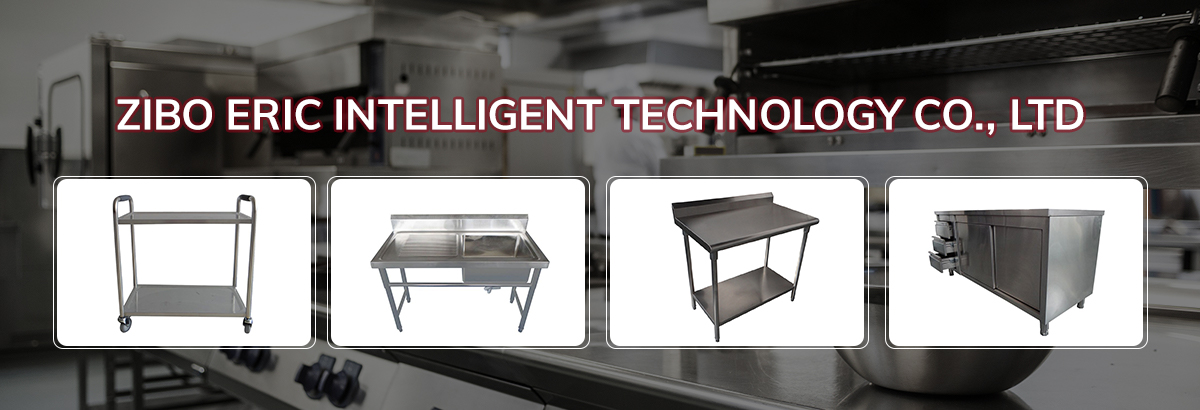Hotel kitchen design, restaurant kitchen design, canteen kitchen design, commercial kitchen equipment refers to the large-scale kitchen equipment suitable for hotels, restaurants, restaurants and other restaurants, as well as the canteens of major institutions, schools and construction sites. It can be roughly divided into five categories: stove equipment, smoke ventilation equipment, conditioning equipment, mechanical equipment, refrigeration and insulation equipment.

Stainless steel is an alloy of iron, nickel, manganese and other metals. Therefore, its maintenance should be in the following aspects:
1. Regularly wipe the dirt on the surface with a wet cloth, and then dry it with a dry cloth.
2. Avoid spilling vinegar, cooking wine and other liquid seasonings on its surface. Once found, wash it with clean water in time and wipe it dry.
3. Do not often move back and forth stove, shelves, cooking machinery and other equipment, especially the use of sliding floor.
4. Stainless steel cookers should be checked regularly for fire leakage.
5. Cooking machinery, such as flour mixing machine, slicer, etc., should not be lazy, but should be cleaned in time.
Purchase of commercial kitchen equipment
1. The accessories of kitchenware include sink, faucet, gas stove, range hood, dishwasher, garbage can, seasoning cabinet, etc. you can buy them by yourself or ask the designer to buy them for overall consideration.
2. The purchase of kitchenware should focus on quality, function, color and other factors. The products should be wear-resistant, acid and alkali resistant, fire-resistant, bacteria resistant and static resistant. The design should give consideration to the basic requirements of beauty, practicality and convenience.
Installation of commercial kitchen equipment
1. Installation sequence of commercial kitchen equipment. The standard installation sequence is: wall and ground base treatment → installation product inspection → installation hanging cabinet → installation bottom cabinet → commissioning water supply and drainage → installation supporting electrical appliances → test and adjustment → cleaning.
2. The installation of kitchen utensils should be carried out after the decoration and sanitation of the kitchen are all ready.
3. The installation of kitchenware requires professionals to measure, design and ensure the correct size. Kitchenware and hanging cabinet (there are adjusting feet under Kitchenware) level. Silica gel is used for waterproof treatment at the joint of gas appliance and table top to prevent ponding and leakage.
4. Safety first, check whether the kitchen hardware (hinge, handle, track) is firmly installed, and whether the hanging kitchen is firmly installed.
5. The height of the range hood is subject to the height of the user, and the distance between the range hood and the stove should not exceed 60 cm. Install the kitchen cabinet first and then install the range hood. It’s easy to cause trouble, so it’s best to install it at the same time with the kitchen cabinet.
6. Acceptance of kitchen equipment. There are no obvious quality defects such as looseness and forward tilt. The connection between kitchen equipment and base must meet the requirements of relevant national standards. The kitchen utensils are firmly connected with the base wall. The reserved positions of various pipelines and inspection ports are correct, and the gap is less than 3mm. The kitchenware is clean and pollution-free, and the table top and door leaf meet the design requirements. Accessories should be complete and installed firmly.
Post time: Feb-20-2021
